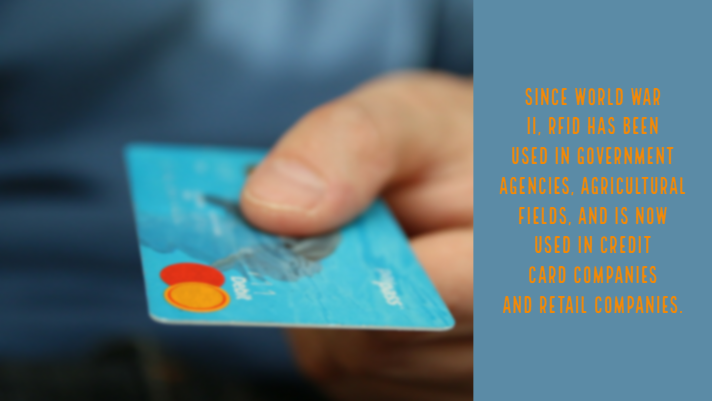
Why Are Contactless Payments So Popular?
History of RFID Technology
RFID technology dates back to World War II. Countries started using a passive form of RFID system. RFID stands for Radio Frequency Identification. The countries at War used this method to identify enemy planes from their own. The British were the first to use an active form of RFID by placing a transmitter on their planes. This allowed radar stations to send a signal and receive a signal back from the transmitter identifying the planes as their own.
The use of RFID in World War II simulates how the commercial use of RFID works today. Since World War II, RFID has been used in government agencies, agricultural fields, and is now propagating its use in credit card companies and retail companies. In 2016, Peerless Research Group reported growing companies were planning to invest more time and money in RFID technologies. Today, we are seeing the benefits of those investments.
How Contactless RFID Readers Work
Contactless RFID readers are replacing the use of magnetic card readers. Contactless transactions are made up of two parts: the tag and the reader. In this case, the contactless RFID reader sends a signal out that wakes up the tag. The tag houses information and receives this signal using an antenna. It then converts the signal into readable information and sends it back to the reader. Looking back at World War II, the plane would have been tagged and the people in the control center would have been sending out a signal via their contactless RFID reader.
Benefits of RFID Technology
The switch is being made from magnetic strip transactions because contactless payments offer a higher level of security. The transaction uses different information every time a transaction is made. A magnetic strip uses the same information every time: the number on the credit card, the three-digit code on the back, the name on the credit card, and the expiration date. It’s all laid out visually for people to see on the card. Contactless payment uses a one time code which makes it harder for hackers to track your payment information.
Another great advantage to contactless payments is faster checkout. Cash seems to be a rare commodity these days. Credit and debit cards are convenient, but now contactless transactions are even more efficient. In fact, a contactless transaction takes 15 seconds while a magnetic strip scanner takes 25 seconds. While this is great for the consumer who needs to make a quick stop at the grocery store, it is even more beneficial for sellers. People are more likely to make purchases if they know the transaction will be quick.
